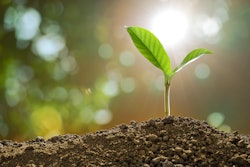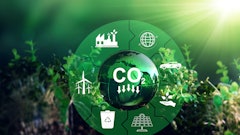
If indoor farming is to become an essential link in the global food chain, growers will need to find better ways to help plants achieve their full genetic potential in these artificial environments. Crop quality, consistency, nutrition and taste have been constrained by the limitations of legacy grow house systems, particularly in the area of lighting, which was originally designed to help humans see, not to fuel plant growth.
Recent advancements in human lighting could provide a roadmap for more productive indoor grow operations. Over the past several years, so-called “human-centric lighting” technology has emerged, which goes beyond lighting areas so that people can see and instead helps to improve their health and well-being through lighting designed to affect biology. Human-centric lighting essentially produces and integrates a natural spectrum of light indoors, affecting the biological triggers of circadian rhythms.
The challenge is, individuals have different biological needs – or genetic “chronotypes” – with regard to their lighting environment.
So do plants. We are now finding similar relationships between artificial light and plant chronotypes.
That’s why the evolution in human-centric lighting is relative to agricultural lighting technology breakthroughs, which is likely a game changer for indoor farming. Next-generation systems can be tailored, adjusted and optimized to affect specific genetics to address the needs of a plant, providing what that particular crop requires.
It begins with a plant’s biology
Consequently, to design the perfect lighting environment for commercial growing operations, science suggests you need to start with the plant’s biological needs and work backwards. A new hybrid lighting technology, partially inspired by the bioregenerative life control systems that NASA designed for space habitats, has been designed to offer this level of plant personalization. It integrates natural sunlight with precisely tuned, broad-spectrum LED lighting and a control system capable of artificial intelligence (AI) influence, sensors and Internet of Things (IoT) technology to create near-perfect growing environments that address the unique needs of each type of crop. A critical challenge for greenhouse and indoor growers is to provide plants with enough of the right kind of light for effective photosynthesis to grow optimally regardless of the geographical location and climate. To achieve that goal, operators must reverse-engineer the plant’s chronotype to develop the optimal light “recipe” for growth, effectively identifying how to deliver both natural and articial light so that the plant is provided with what it needs to thrive.
High-performance LED fixtures provide wide spectrum-capable technology that naturally leads to more yield than typical LED lights for a variety of plants. The spectrum is scientifically engineered for optimal Photosynthetically Active Radiation (PAR) photon efficacy, the specific light spectrum plants prefer for photosynthesis. In the same way humans depend on a balanced relationship of energy and spectrum, plants also depend on their own relationship of energy and spectrum.
Growers should then fine-tune the light’s color distribution and wavelength. A plant’s photoreceptors affect growth at different developmental stages, making it possible to alter a plant’s growth cycle, productivity and yield by tuning the light’s spectral output.
Light uniformity is also critical, as it regulates crop growth and flowering schedules. If light is not distributed in a uniform manner, crops can develop unevenly and poorly. With the new model, designers can achieve a uniform distribution of light that is easily positioned to achieve the most effective penetration into a plant canopy.
The need for sunshine
Greenhouses and indoor farms that rely on artificial lighting have a disadvantage. While LEDs are more energy efficient than legacy lighting sources, indoor farms use a significant amount of energy and materials to operate, even when solar panels supplement electricity production.
Plants can grow in a more robust, flavorful and cost-effective manner in full natural sunlight that is supplemented with artificial lighting. Maximizing sunlight when it’s available is essentially free energy for powering operations. Beyond the lighting cost savings, natural light also warms the microclimate when necessary, dramatically reducing heating energy requirements.
When the sun is overproducing heat in hot climates, the new temperature-regulation technology comes into play. Organic, foam-based “clouds” trapped within an airspace in the grow house canopy can be activated in harsh sunlight, diffusing the light and sun’s UV energy, dramatically reducing air-conditioning electricity requirements.
This combination of biologically-tuned lighting and natural sunlight can significantly enhance and extend a plants’ photoperiod beyond natural daylight hours, maximize crop growth and quality and reduce time to harvest by up to 50%. This new model of a precision growing system can uses up to 90% less energy than typical indoor grow operations. For indoor farms to play a meaningful role in solving the world’s food challenges, growers need to start by understanding a crop’s biological needs and build a growing system tailored to optimize growth. The new model can transform costly, energy-inefficient indoor grow operations into eco-friendly solutions that provide the opportunity to grow affordable, sustainable, good-tasting, nutrient-rich produce that is locally harvested.



















